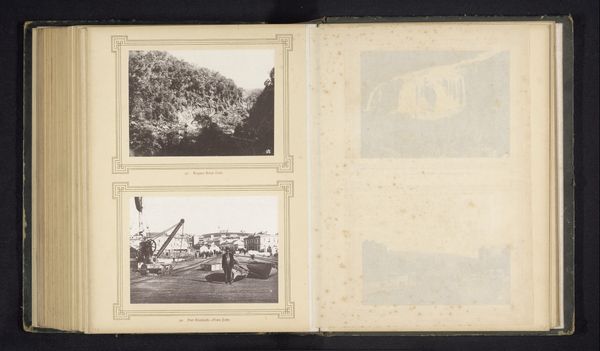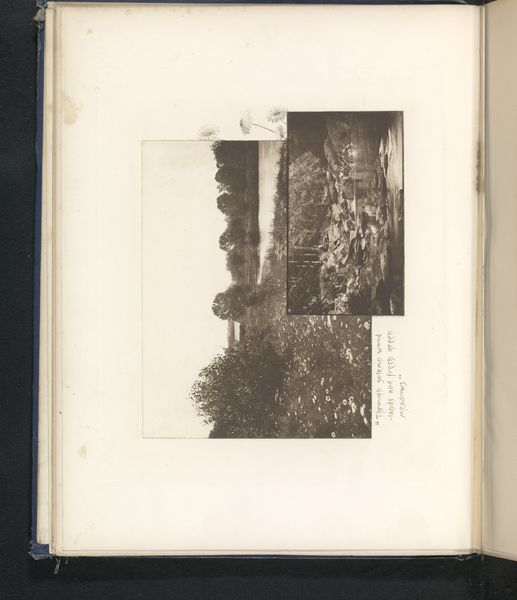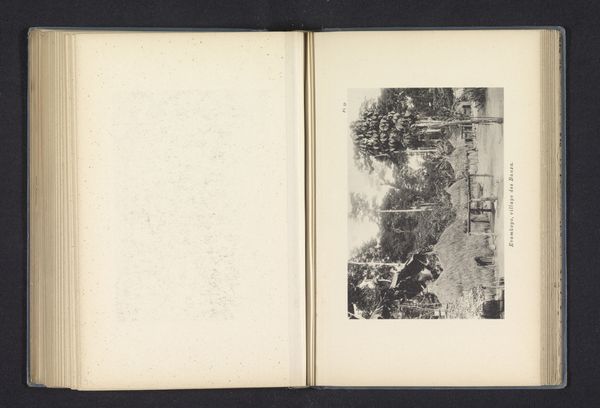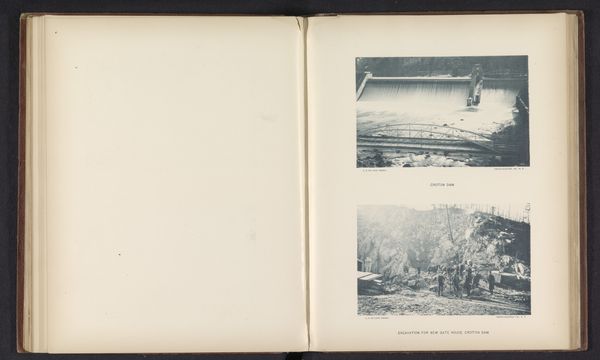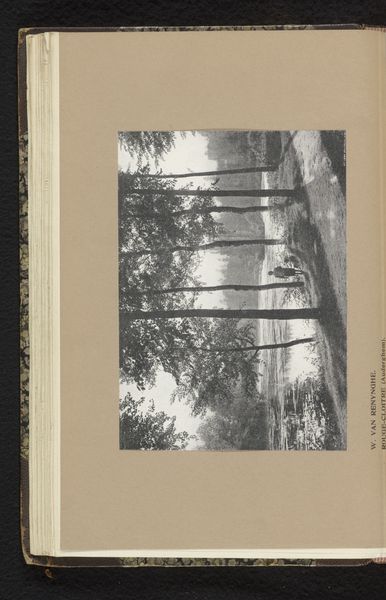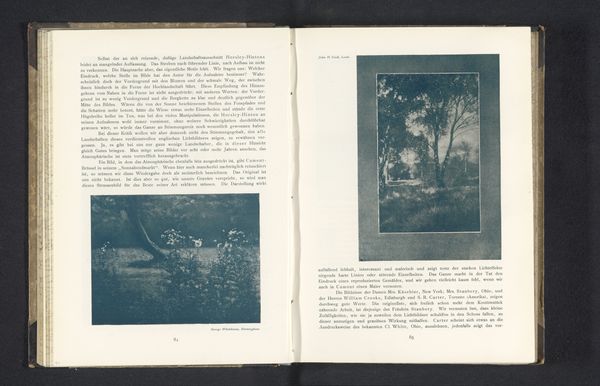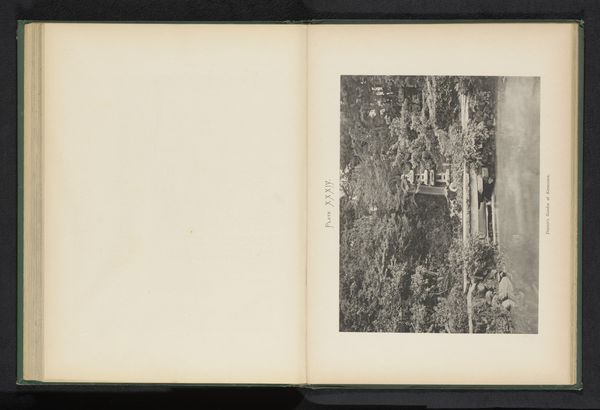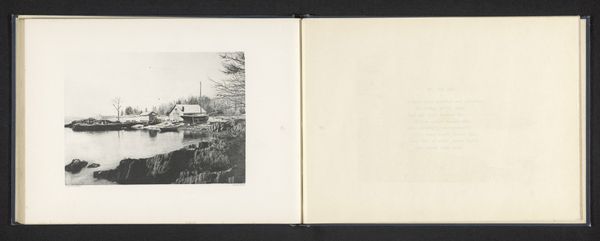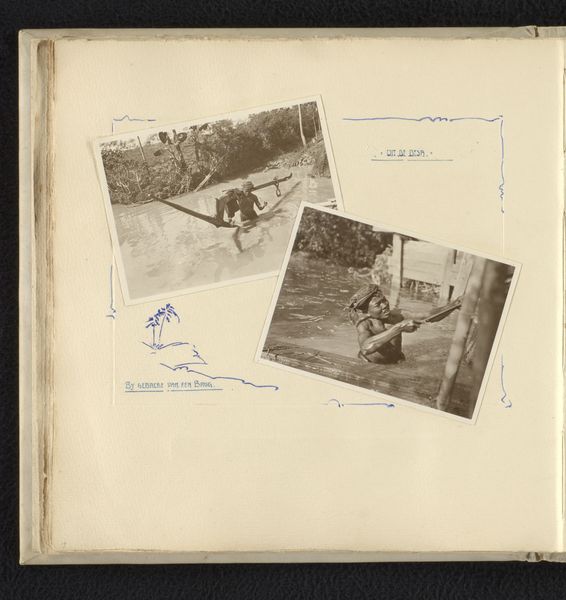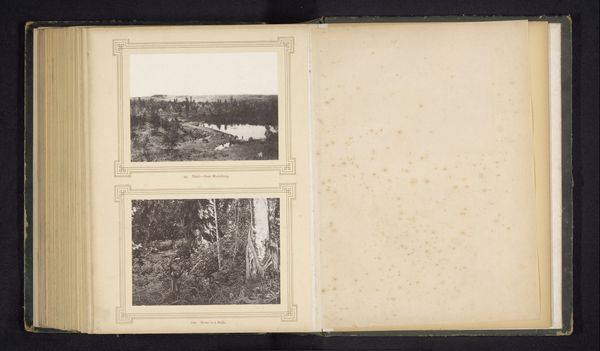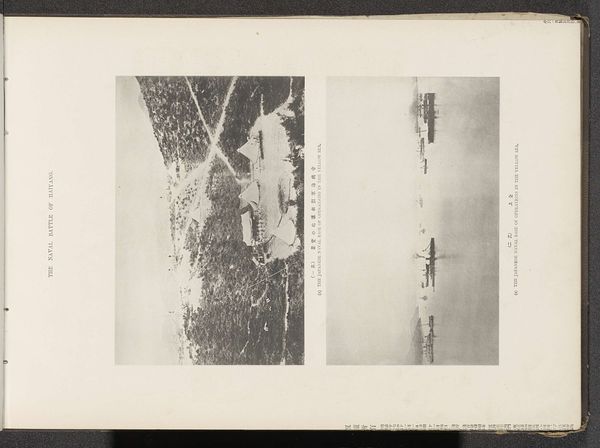
print, photography
# print
#
landscape
#
river
#
photography
#
orientalism
Dimensions: height 113 mm, width 176 mm
Copyright: Rijks Museum: Open Domain
Curator: This fascinating print is called "Stoomboot op de Lachine-stroomversnellingen te Canada," or "Steamboat on the Lachine Rapids in Canada." It was created by the Standard Engraving Co. before 1898. Editor: The striking cool blue tone of the print creates a rather ethereal atmosphere. It seems to depict a powerful industrial scene softened by this visual choice. The formal structure creates a sense of motion, all horizontal lines clashing and pointing into one direction. Curator: Absolutely, it is visually intriguing, especially when you consider the socio-economic factors at play. Standard Engraving Co., the entity responsible, were key players in the dissemination of images for a rising consumer culture. This particular scene, however, reflects both the power and potential dangers of early industrial transportation. The location is not a coincidence, referencing to nature and transportation in order to build new industries on exploitation. Editor: I am more captivated by the artist’s deliberate play with composition, especially their control of tonal variation. Notice how the churning river acts as a counterpoint to the boat’s implied movement, each reflecting yet disrupting the other with light and shadow. There is an orientalism stylistic component within a landscape scenery which creates an oxymoronic relation with the rest. Curator: Precisely. The reproduction as print suggests this wasn't intended for the elite art world, but rather for a broader public engaging with the imagery of progress. It raises interesting questions about who got to participate in, profit from, or even be endangered by that so-called "progress". What labor went into its creation? Who benefitted, and at what cost? Editor: And consider the formal aspects! This high contrast intensifies the feeling of sublime struggle—nature versus machine, if you will. These pictorial strategies clearly affect our aesthetic response irrespective of the represented object. It uses those oppositions to guide our visual perception. Curator: It's a confluence of materiality, industry, and aesthetics then—the print itself made through complex labor, representing labor, viewed within a system of labor that dictates access and value. It highlights a transitional period marked by rapid industrial advancement. Editor: A harmonious, complex assembly of shapes, light, and darkness creating meaning irrespective of context! Thank you, this has illuminated new visual facets to appreciate. Curator: Agreed, understanding both form and the forces which shaped its creation offers a complete, crucial narrative about that past.
Comments
No comments
Be the first to comment and join the conversation on the ultimate creative platform.

